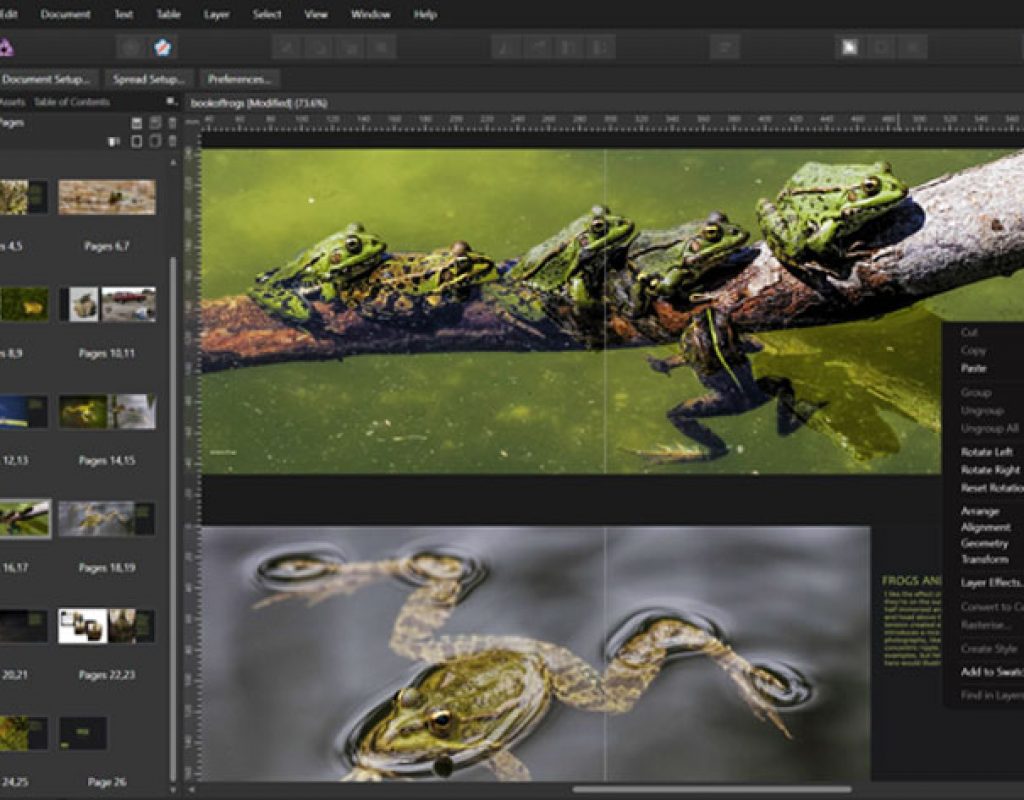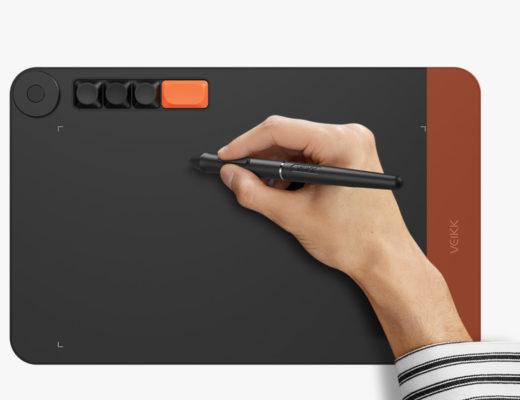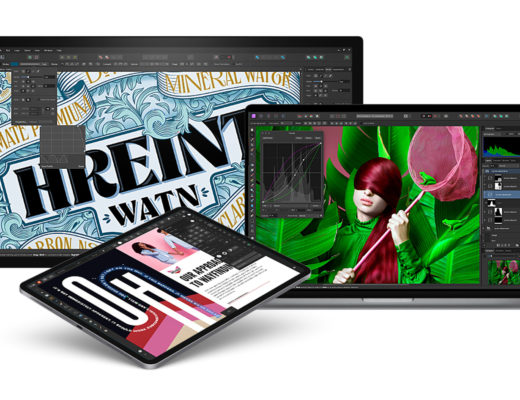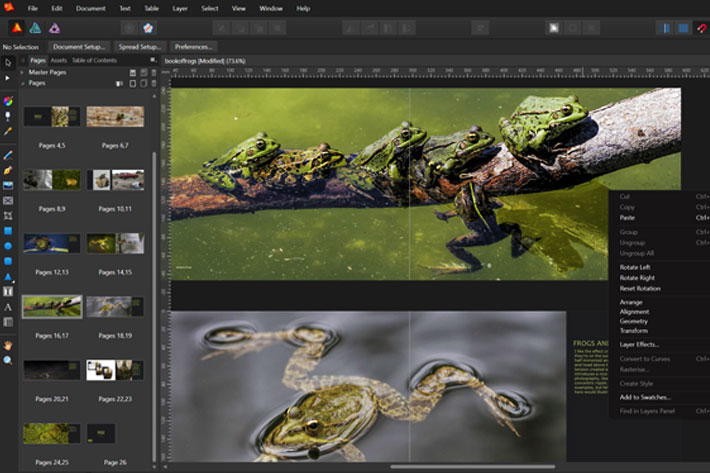
Launched this month, the beta version of Affinity Publisher presents a solution for anyone who needs to create everything from leaflets or posters to a whole book, either for print or digital.
The digital revolution transformed us all in a potential publishing company. The number of tools available, either to download or online, made it easier to create a variety of documents, from model release sheets to leaflets, which can be printed or used in their digital format. Photographers eager to control their own images and publish their own photo books were early adopters of desktop publishing solutions, and from Microsoft’s Publisher to more sophisticated solutions, as Blurb’s own software, the number of choices are numerous, and have grown in recent years.
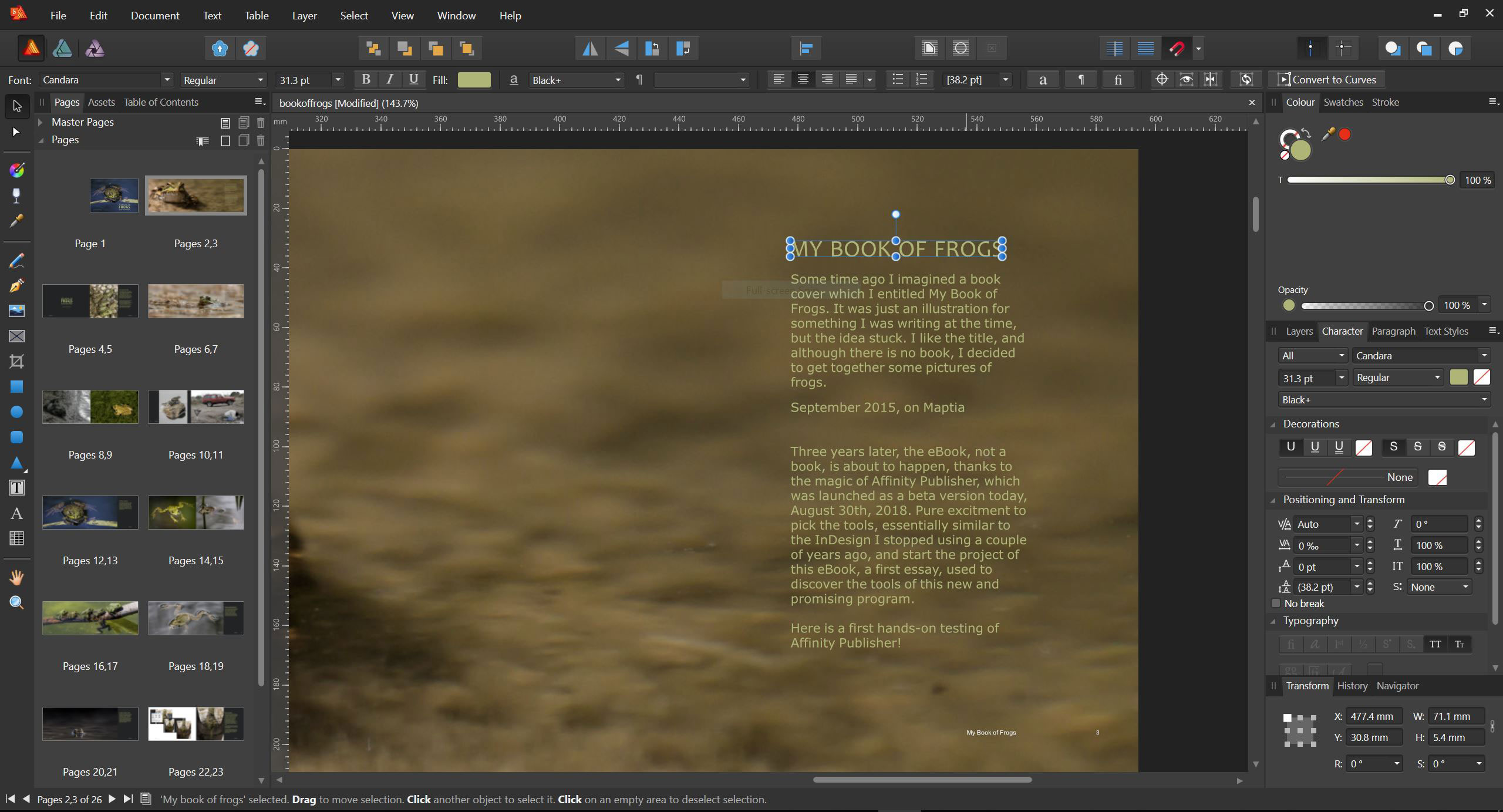
“Why should I be interested in DTP and continue reading this?”, you may have asked by now. Well if you’ve ever wanted to try your hand at creating your own brochures, leaflets, posters or even a book, then this is for you. Back in December 2017 I pointed to a sneak preview of Serif’s Affinity Publisher, and yesterday the company launched the beta version of the program, which is available, free, for Mac and Windows, so users can try it and help to build the final product.
https://youtu.be/XH1aNLKtjCw
Building a Creative Suite
The desktop publishing app Affinity Publisher is the third part of the range of creative software promised by Serif. The program will boast full integration with Affinity Designer and Affinity Photo, allowing owners of all three to edit vector designs and images right there in one app, in what Serif claims is “a stunning new way.” Serif are emphasising that the app is still in development and beta users will play an influential role in shaping the first retail release, around the end of the year.
Those who have already downloaded the software found the buttons to switch to Photo and Designer within Affinity Publisher, though these will not be activated until later in the beta period. The program is in beta and, as Serif Managing Director Ashley Hewson says, : “… there will be bugs and areas of the app which are not yet fully polished, so we don’t recommend you use it for any important production work at this time.”
Eager to discover the program, I took part of the afternoon yesterday to download it and explore the interface and features, creating a small eBook, My Book of Frogs, which, better than words, show what’s possible to do with this new desktop publishing app, now available for Mac and Windows computers only, but with an iPad version coming later.
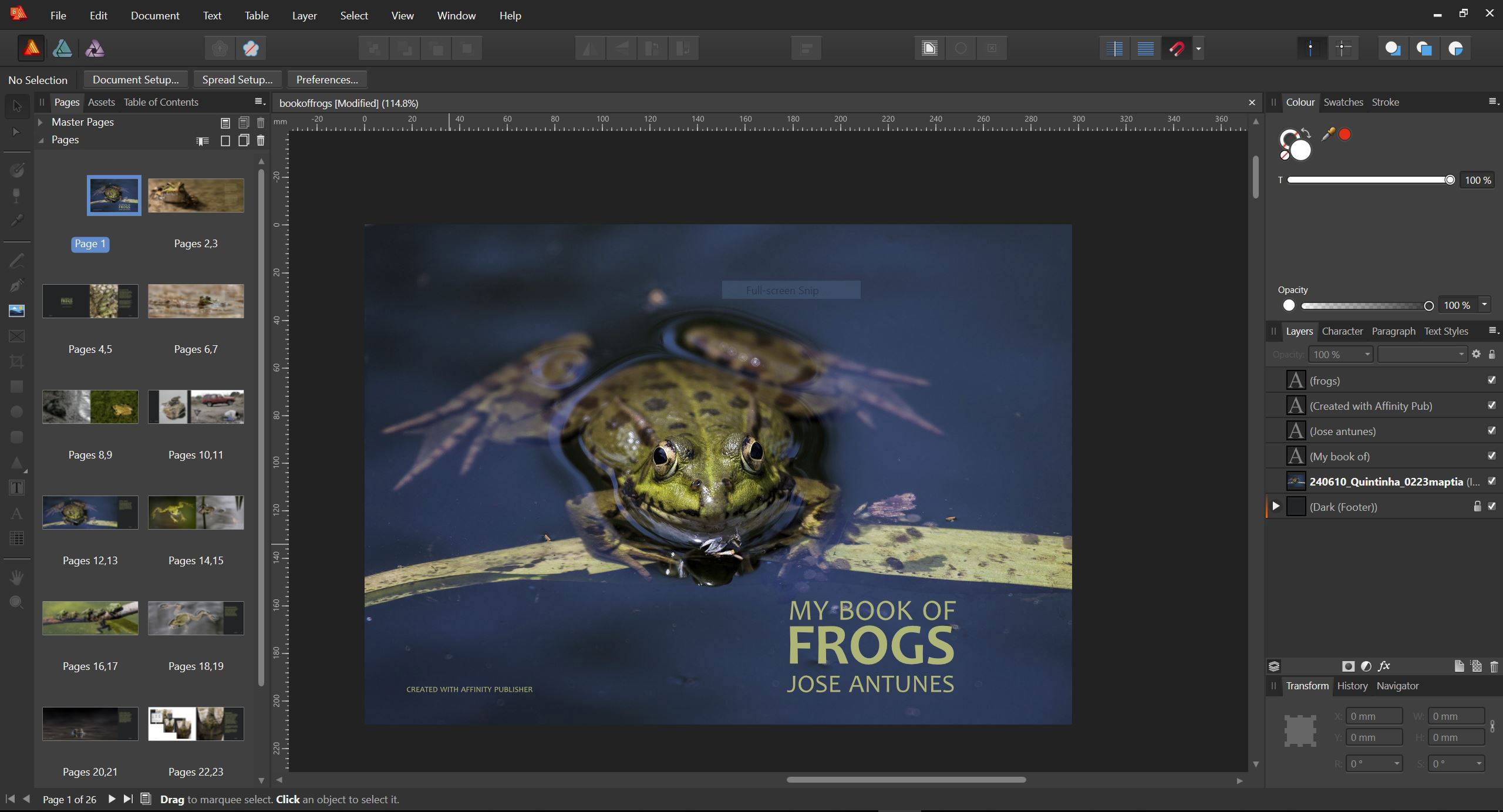
Serif Managing Director Ashley Hewson says: “From the earliest days of visualising the Affinity range, we planned an unrivalled trio of sleek, super-modern apps created to work with the latest technology – ultra-fast, with stunning power and completely stripped of bloat”, adding that “the final step towards realising that initial ambition will come with the launch of Affinity Publisher.”
Affinity Publisher is the result of thousands of hours of development time dedicated by the multi-award-winning team at developer Serif’s UK headquarters. The next phase is starting now, and for that, says Hewson, “we are relying on beta users to let us know what works and what doesn’t. If there are any features that need adding, let us know. Even if we don’t get them in before we release version 1, you can expect plenty of free updates to come, just like with our other apps.”
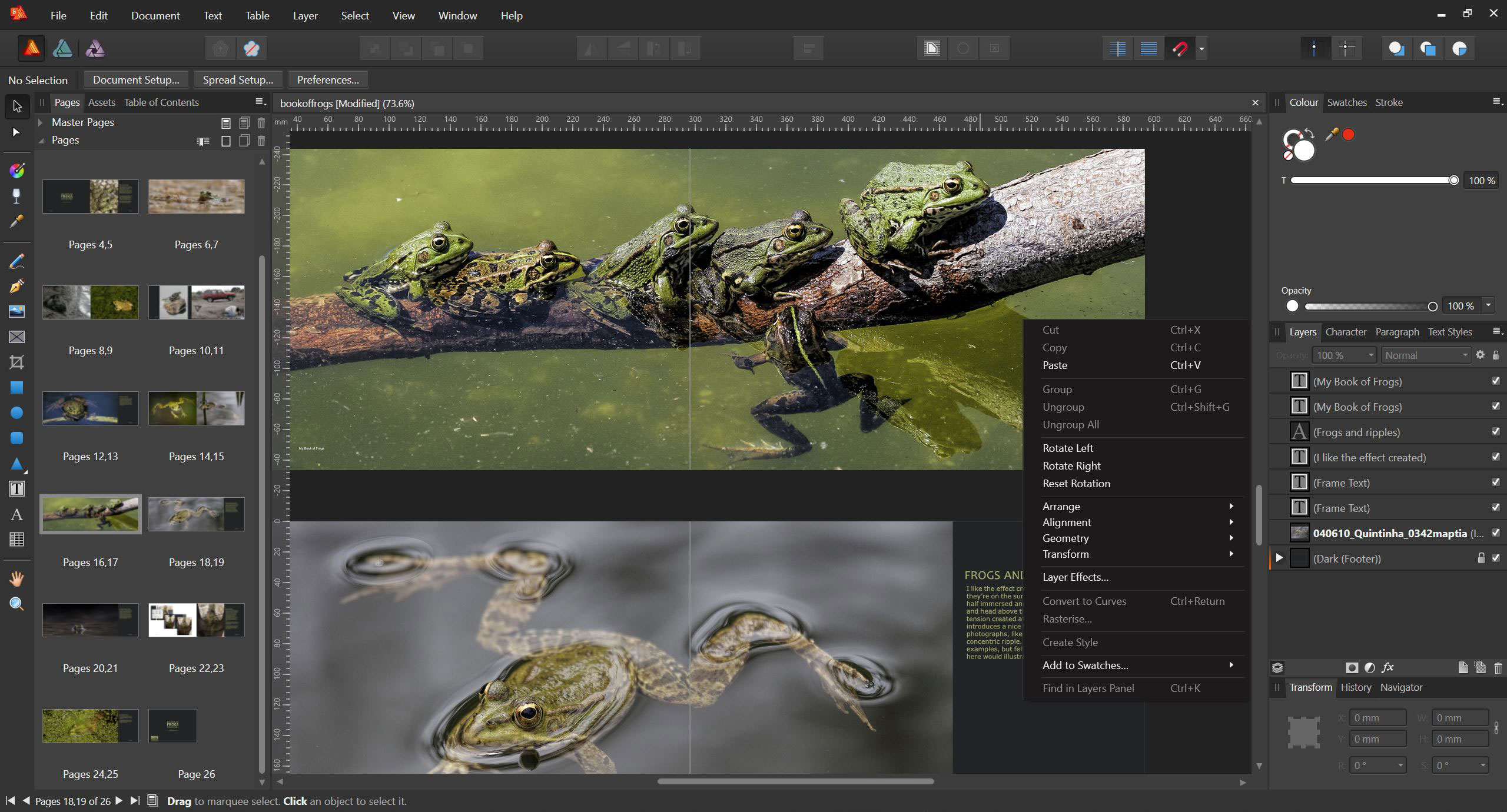
“It’s an all-new app which we believe will revolutionise desktop publishing in the same way Affinity Photo and Affinity Designer have shaken up professional photo editing and vector graphic design” says Ashley Hewson.
Key desktop publishing capabilities built into Affinity Publisher include:
- Advanced typography
- Linked text frames
- Master pages
- Facing page spreads
- Dynamic photo frames
- Tables
- Baseline grids
- Linked resources
- End-to-end CMYK
So, Affinity Publisher is on the way to become a reality, and this public beta should help Serif to define the future of the software. Right now, it’s still not doing everything people want, and some of the missing features are documented – although that does not stop some people from writing negative comments about them not being there… – but I wanted to try the program and see if I could create a whole eBook, as that’s something important for me.

From InDesign to Affinity Publisher
The 25-page eBook My Book of Frogs may only touch the surface of what Affinity Publisher does, but it serves its purpose: to allow me to share with readers here at ProVideo Coalition some notes about this public beta and why I think it is important to anyone who wants to produce in-house promotional material, from photographers to videographers.
The eBook, which is available for you to download (to properly view the spreads), allowed me to confirm that anyone familiar with Adobe’s InDesign will have no problems with the interface of Publisher. There are some changes, as far as I remember – I’ve not used InDesign for a while now – but it wasn’t hard to find everything I needed to finish this essay of an eBook.
From setting the Master pages to exporting to pdf, everything went smooth, with a single crash along the whole process, which did take some hours to complete. Your mileage may vary, but for me, Affinity Publisher is my next solution in terms of DTP, and I will buy the program as soon as it comes out. I’ve long been waiting for this, as I’ve a keen interest in producing different types of promotional material for my activity, something you may also be interested in. Because I believe many readers will also be interested in such a solution, I decided to write this article to publish here at PVC.
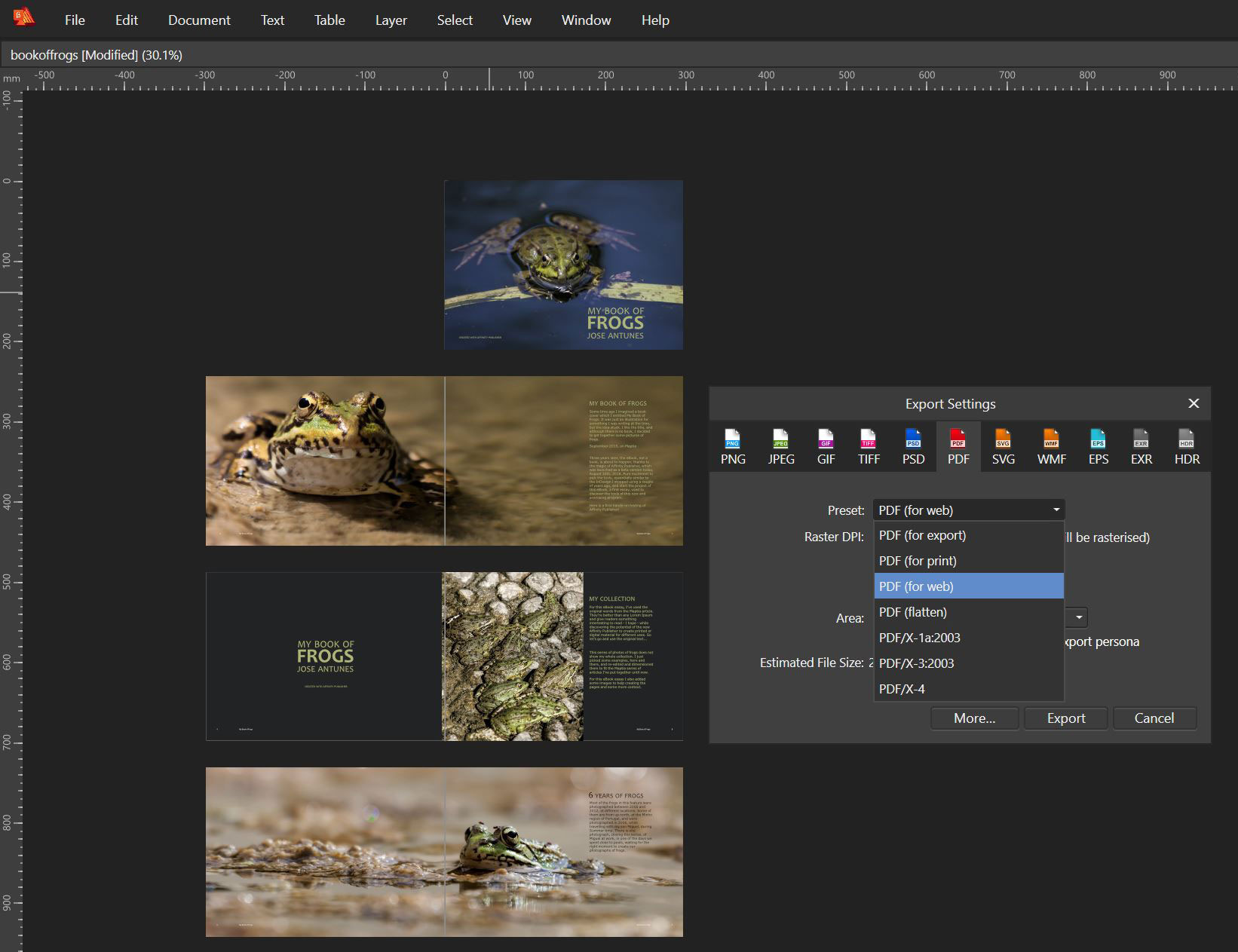
The continued need to cut costs and the evolution of DTP programs makes the production of professional-looking materials in-house a good idea. Anything from a one page promotional poster to a whole eBook, or one book, if you decide to print it, are within reach to anyone who owns a computer. We’ve come a long way since the early word processing programs offering some basic DTP features, and solutions as Affinity Publisher are accessible to everyone, from the professional designer to the enthusiast who wants to create a book to share with friends and family.
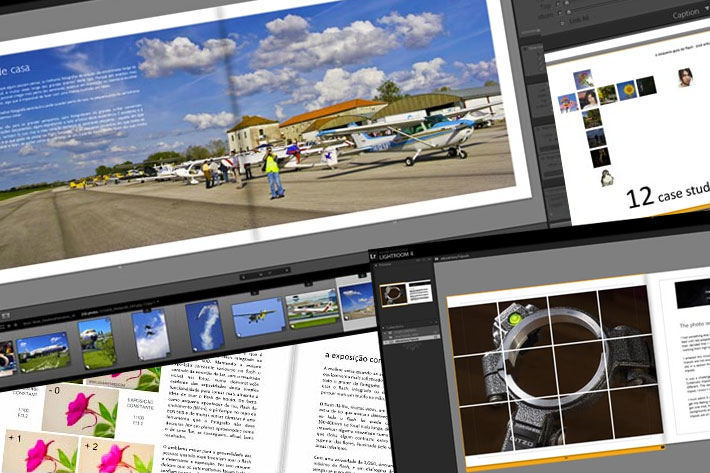
My adventures in DTP
My interest for desktop publishing or DTP started before it was even invented, as my first newsletters were created in the late 1960s, before personal computers and desktop publishing. I used an old typewriter and carbon copy paper to create up to six copies of a one page “newspaper” I would then try to sell to our neighbors. It worked, and that early experience may have defined my future as a journalist and photographer. In college I was involved with the available newspaper projects, which allowed me to follow the evolution of newspapers in terms of printing. At the same time, we evolved from pages drawn by a designer, by hand, to the first computer solutions.
After a career in newspapers and magazine, in the early 2000s I founded a publishing house with a friend, and we needed a modern DTP solution to create the magazines we were publishing – ours and from corporate clients –, so we opted for the recently available Adobe InDesign, and our designers attended some workshops at Adobe to become proficient with the software. As early adopters, Adobe made a case study on us, and the following years, although not using the program myself, I had first-hand experience of its mechanics, as we would do text corrections and final adjustments directly on the pages.
Adobe Lightroom was launched in 2007, but only in version 4, from 2012, the program offered a new module, Books, a feature much requested by photographers. I wrote than that “making books and eBooks in Lightroom 4 is a fantastic experience if you’ve ever dreamed of being an InDesign expert, but never really caught the hang of it.”
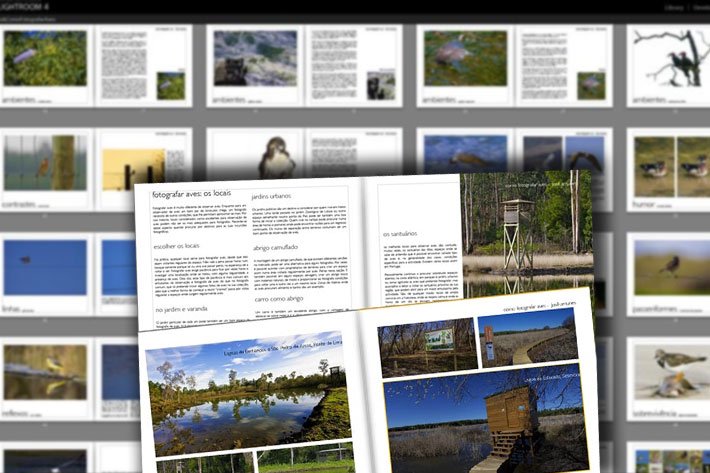
A Book module in Lightroom 4
The Book module in Adobe Photoshop Lightroom 4 is based on Blurb’s BookSmart program, which I started using in 2008, as it represented an easy way, then, to create books. BookSmart had a problem: it was tied to Blurb, so you had to print your book with them. The module in LR4 presented a new option: to create a PDF that you could use without being tied to a specific printing house or system. That suited me well, as my experiences with Blurb were not always the best, and I wanted to be free to use other printers, as in fact I did.
The Book module was not easy to use, but that did not stop me from embarking on an adventure: for five months starting February 2013, I created a monthly magazine using it, just to demonstrate the potential of the module. It has not easy, because the tool was not designed for that purpose, but an exchange of emails with Victoria Brampton – aka The Lightroom Queen -, and with Julieanne Kost, Adobe’s LR4 evangelist, and some more people at Adobe, helped to solve the problems and find ways around some of the limitations.

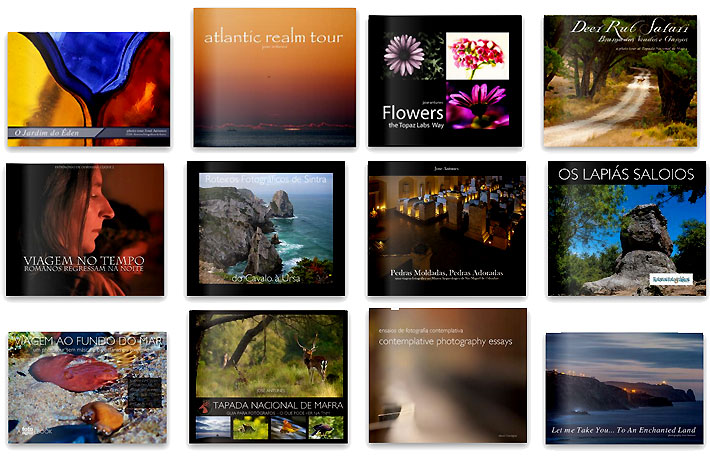
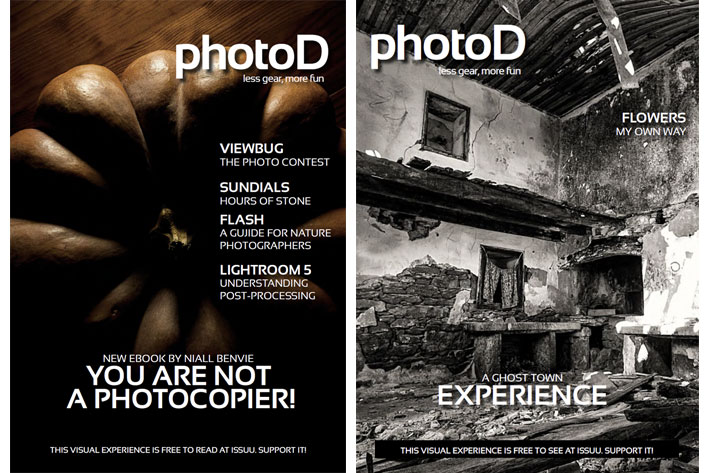
The tendency of the Book module in Lightroom 4 to crash when processing the monthly 56 pages magazine led me to stop the experience and look elsewhere for a more stable solution, which was clear to me: Adobe InDesign. In the Summer of 2013 I adopted InDesign to create everything from promotional materials to my workshops to the eBooks I tend to organize with participants, after each tour. I’ve also used it to explore different “magazine” projects and other DTP ideas. The different links published here point to some of the projects.
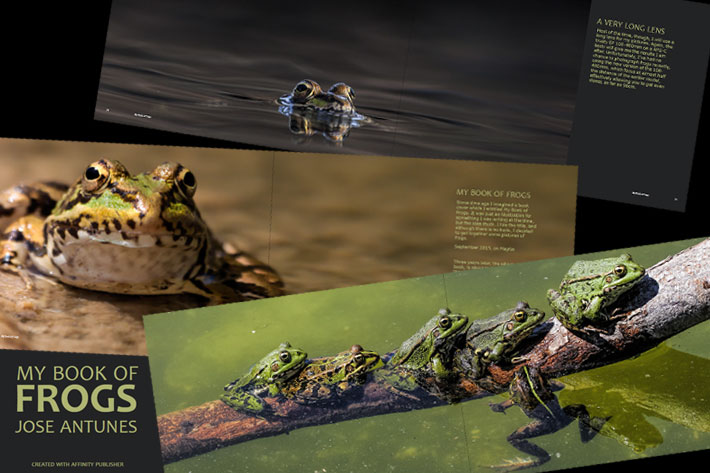
Next: Affinity Publisher
I’ve stopped using InDesign almost two years ago, and although I’ve wanted to develop some eBook ideas, I’ve refrained from reinstalling the program. Affinity Photo, which I acquired as soon as it came out, December 2016, has been my solution to create single page promotional posters, and I’ve been eagerly waiting for Affinity Publisher. The waiting is over, and the program will be my DTP solution for the future. Information about price is not available yet, but a no subscription model, with a cost that will probably be similar to Photo and Design, which is $49.99, suggests this is an alternative to consider.
If you want to know more about Affinity Publisher, Serif has set up a dedicated forum where beta users are encouraged to share their feedback, suggestions and requests. Give it a try, if you want to be not just a photographer and videographer, but also the master of your own DTP company.

Filmtools
Filmmakers go-to destination for pre-production, production & post production equipment!
Shop Now